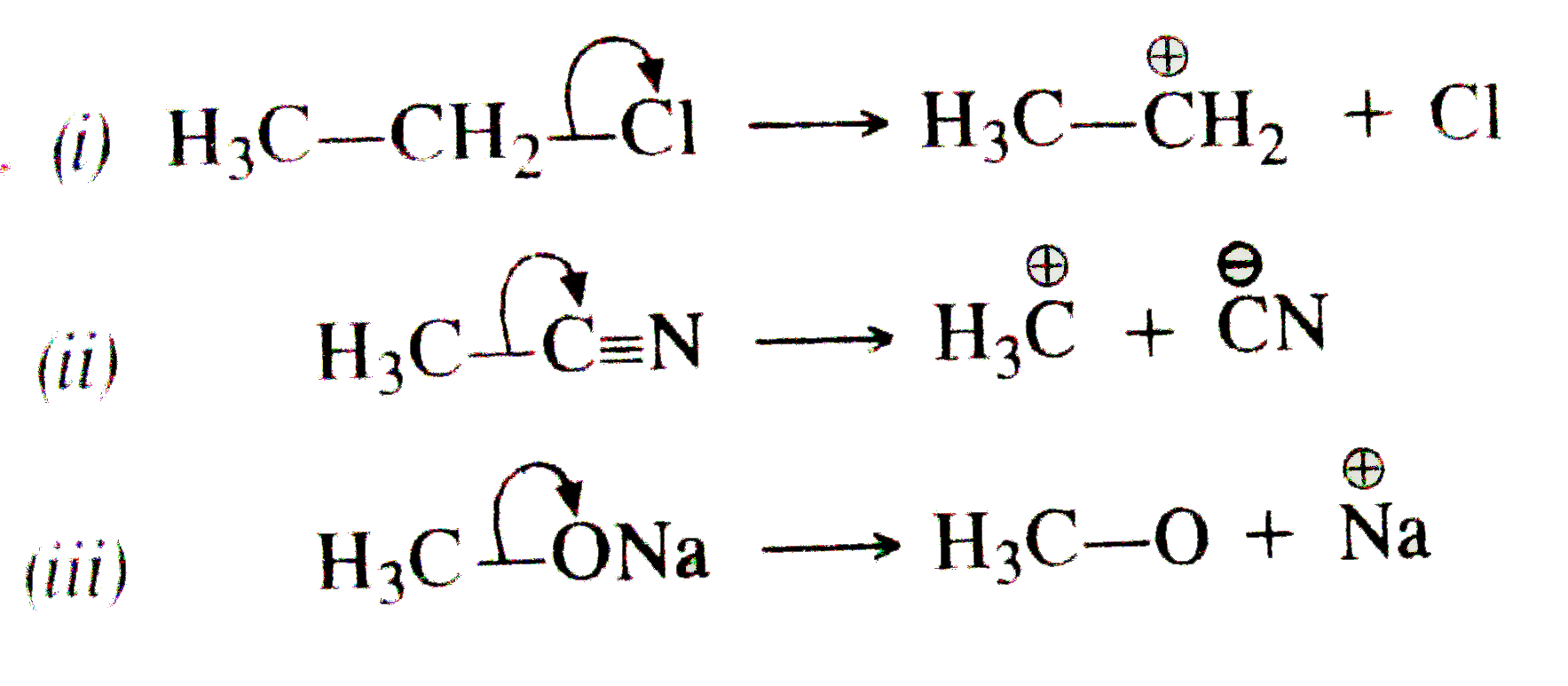Using curved arrow notation show the formation of reaction intermediates when the following covalent bonds undergo heterolysis.
(i) H3C−CH2−Cl (ii) H3C−C≡N (iii) CH3ONa
Topper's Solved these Questions
- ORGANIC CHEMISTRY - SOME BASIC PRINCIPLES & TECHNIOUESBOOK - DINESH PUBLICATIONCHAPTER - ORGANIC CHEMISTRY - SOME BASIC PRINCIPLES & TECHNIOUESEXERCISE - N.C.E.R.T.
40 Videos
- ORGANIC CHEMISTRY - SOME BASIC PRINCIPLES & TECHNIOUESBOOK - DINESH PUBLICATIONCHAPTER - ORGANIC CHEMISTRY - SOME BASIC PRINCIPLES & TECHNIOUESEXERCISE - SHORT ANSWER TYPE QUESTION
33 Videos
- NUCLEAR AND RADIO CHEMISTRYBOOK - DINESH PUBLICATIONCHAPTER - NUCLEAR AND RADIO CHEMISTRYEXERCISE - Evaluate Yourself
45 Videos
- P BLOCK ELEMENTS (GROUP 13 AND 14 )BOOK - DINESH PUBLICATIONCHAPTER - P BLOCK ELEMENTS (GROUP 13 AND 14 )EXERCISE - Straight obj.
17 Videos
Similar Questions
Using curved arrows rotation,show the formation of reactive intermediates when the following covalent bonds undergo heterolytic fission.
(a) CH3−CN
(b) CH3−Cu
View SolutionUsing the curved-arrow notation, show the formation of reactive intermediates when the following convalent bonds undergo heterolytic cleavage :
(a) CH3−S−CH3
(b) CH3−CN
( c) CH3−Cu .
View Solution
Knowledge Check
Base strength of the following
(i) H3CCH−2 , (ii) H2C=CH−
(iii) HC≡C−A(iii)>(ii)>(i)B(i)>(iii)>(ii)C(i)>(ii)>(iii)D(ii)>(i)>(iii)
Using the curved-arrow notation, show the formation of reactive intermediates when the following convalent bonds undergo heterolytic cleavage :
(a) CH3−S−CH3
(b) CH3−CN
( c) CH3−Cu .
View SolutionUsing the curved-arrow notation, show the formation of reactive intermediates when the following convalent bonds undergo heterolytic cleavage :
(a) CH3−S−CH3
(b) CH3−CN
( c) CH3−Cu .
View SolutionUsing curved-arrow notation, show the formation of reactive intermediates when convalent bonds in the following substance undergo heterolytic (polar) cleavage.
(i) CH3−SCH3 , (ii) CH3−CN
(iv) CH3−Cu , (iv) Ag−I
(v) H3N+−BF3 , (vi) Cu(−OH2)2+4
Stratergy: Both bonding electrons remain with the more electronegative atom. If the bonding atom have same electronegetivities,, then the bonding electrons are taken away by the larger atom as it can sustain the negative charge more effectively.
View SolutionHow many sigma and pi bonds are present in the following molecules :
(i)CH3−CH3 (ii)CH3−OH (iii)CH2=CH−C≡N (iv)CH2=C=CH2CH3 (v)CH≡CCH=CHCH3
View SolutionState the nature of hybridisation of each carbon atom in the following compounds ?
(a)CH3Cl (b)(CH3)2C=O (c)CH3−C≡N (d)H−O||C−NH2 (e)CH3−CH=CH−C≡N
View SolutionSate the nature of hybridisation of each carbon atom in the following compounds ?
(a)CH3Cl (b)(CH3)2C=O (c)CH3−C≡N (d)H−O||C−NH2 (e)CH3−CH=CH−C≡N
View SolutionIndicate the σ&π bonds in
(i) CH2Cl2
(ii) CH3−C≡C−CH3
View Solution

